News | Blog
\ To read the full article please click on the title or on Read More. /
"Whenever I get gloomy... with the state of the world, l think about the arrivals gate... at Heathrow airport. General opinion makes that we live in a world of hatred and greed... but I don't see that. [...] As an artist and jewelry designer, Linda has always believed in the power of art to convey messages of hope and unity. That is what she aims to do with this collection..
Curated by Helen Williams Drutt, an exhibition of art works by contemporary American artists from the National Museum of Sweden will open in March, 2023.
This month I am exploring the idea of whether these works can travel through time by holding it up to iconic women in art from different eras and cultures. So far the illusion and play on perception has me mesmerized.
This month I am exploring the idea of whether these works can travel through time by holding it up to iconic women in art from different eras and cultures. So far the illusion and play on perception has me mesmerized.
New York City Jewelry Week runs from November 15 through 21, 2021. The AJDC Polka Dot Project will be on show at the Aaron Faber Gallery in Midtown Manhattan (by appointment only) from November 15 and will continue through the holiday season to January 22, 2022. A handful of my selected works will be on sale at the Gallery.
“I have gotten so many compliments on these pieces - mostly from people who aren’t familiar with Linda MacNeil’s work and are not collectors of contemporary glass - they just know good design and fine craftsmanship” — Suzanne Perrault
In 2021, Linda introduced the idea of creating an annual offering of a singlular piece from her private collection of her work. Every year the offer will be announced in late January and released on her birthday, April 14. This year, the 2021 inaugural offering, Neck Collar No. 46 from 2018 went to Suzanne Perrault of Rago Arts and Auction Center
"A Well Kept Secret" necklace from 2020 is on display at the Gem & Mineral Museum at the University of Arizona, @uarizona as part of the #AJDC Living Collection, Secret Garden works on show this summer. The museum is open and can be visited in person.
Both of these works incorporate a mechanical method of assembling my parts, screws and hinges. They are early works, however they already reveal the importance of the combination of metals and color was to my work and the integration of geometric ideas. Both pieces are functional objects in their own way, the bell works as a bell and the necklace is wearable. The concept was linear line and although you can see the continuity you can also see how the concept grew and evolved from 1974 to 1979.
… grandfather Robert Charles Dean (1903-1997), American Architect, (MIT 1927) was a great influence on your life and work. Notable projects he worked on included: the 1936 original Restoration of Colonial Williamsburg, Va. pictured above, known today as known as the world’s largest “living history” museum; the United States National Cemetery, Cambridge, England; and the Campus of Furman University, Greenville, SC. What are your memories of him and how did he impact your path as an artist?
“I am pleased to announce that one of my earliest sculptures, The Bell with Stand, 1974, created while I was at RISD has been acquired and is now in the permanent collection at The Metal Museum in Memphis, TN.” – Linda MacNeil
ncluded in the show is my Neck Collar No.36, 2018, from the AJDC Living Collection. Now until January 2022 at the Together Design Project Exhibition, @Zfolio Gallery in Solvang, California. More works, from…
Like many artists working with the medium of glass, I made a point of visiting the Myrna and Sheldon Palley Pavilion for Contemporary Glass and Studio Arts at the Lowe Art Museum when my husband Dan Dailey and I visited Miami in 2018. We were welcomed by the Lowe’s director, Dr. Jill Deupi, who toured us through the Museum’s surprisingly large facility. Dan (a fellow artist) and I were astonished by the breadth and depth of the Lowe’s holdings, including the impressive display in the Pavilion, which featured a number of works from the Palleys’ personal collection. These promised gifts to the Museum are an expression of the couple’s commitment to ensuring that the public can enjoy their collection as a source of intellectual and aesthetic stimulation, as they themselves have, for more than fifty years.
I went to school for metalsmithing and jewelry, and I evolved into using glass because it’s such an intriguing material. Working with glass is a unique way of making things, and I’m hooked on the range of colors I can develop with glass processes. I find that with minerals commonly used only in jewelry, I just don’t have the freedom of making any shape I want.
Fritted Glass… I use this method of kiln casting to create more organic, 3-dimensional forms. By filling the negative space in a plaster mold with chips, flakes or chunks of glass ranging in size, this technique allows me to control the number of the trapped air bubbles and scale of the bubbles I want to achieve through texture within my design.
Linda MacNeil nominates Paul Klecka as her successor as President of the board of directors of The American Jewelry Design Council (AJDC). Paul Klecka will assume the role of President on April 29, 2021
Linda creates each and every form - from the collar or the links to the distinctive jewels themselves. Some of the processes she uses are evident in her award winning Primavera necklace…. casting with rubber molds for both the gold links and the setting for the diamond detail as well as for creating the glass jewels.
Linda has always been fearless where materials are concerned. She is never one to conform nor one to shy away away from trying something new. Although her work is mostly on an intricate scale this does not deter her from exploring materials normally used at industrial sizes. Her passion for color and light is the driver of her exploration and has led her to different under-explored materials like Vitrolite (plate glass) and Granite. In 1985 after New Hampshire declared Granite their state rock and became “The Granite State" she introduced granite into her work.
In my most recent work, the Neck Collar Series in particular, the overall form is very geometric with strong symmetry. I have introduced a softer touch which is brought out in the round forms and by varying of the textures of the glass.
Most recently, I have been gravitating towards reds and oranges. Also, my choice of 24k gold plating on the metal is making a rich color contrast with the glass. Pantone's orange ochre is one of the colors of Spring/Summer fashion in 2021. I particularly liked its appearance in the Valentino Spring/Summer Couture show in Rome…
The entire form of each necklace is engineered to be functional and yet keep it’s shape on the body. For instance my necklaces can have a rigid form like the Neck Collar series, or a necklace can be flexible like the Floral, Lucent Lines and Elements Series but I rarely allow gravity to decide its form on the body.
I work on several pieces simultaneously. Each at different stages in development. I am currently working on a Neck Collar with a glass collar. This is a new direction this series has taken recently and there are up to about seven people involved in the processes needed to make one of these pieces.
Patterns have been part of the vocabulary of art since ancient Egypt. Which pattern artists of today do you admire? MACNEIL: There are several. Of my contemporaries I admire Linda Threadgill (she works in metal), Yayoy Kasuma (she works with color, light and space), and younger artists, Sarah Moris (paint/mural artist) and Sarrita King (painter). From mid century modern I like the work of Anni Albers (print and textiles).
Q: What types of glass do you use the most?
MACNEIL: PLATE GLASS. Plate glass is the type of medium I use the most because as an artist I like to be in control of both form and color and because the forms I make are precise. I use both vintage and contemporary plate glass. Today’s industrial plate glass has great clarity and comes in reliable measurements and vintage plate glass comes in different thicknesses and in unusual, opaque colors, both are great for use in my designs. I use them in combination with each other as well as independently.
Q: Why do you mix opacities in your work?
The play of light and how it reflects and refracts through glass fascinates me. That is actually one of my favorite characteristics of glass. First, I focus on determining the form, but thereafter, being able to manipulate color and change how much a jewel interacts with light is probably one of the most enjoyable parts of my process. The possibilities presented by these properties are endless.

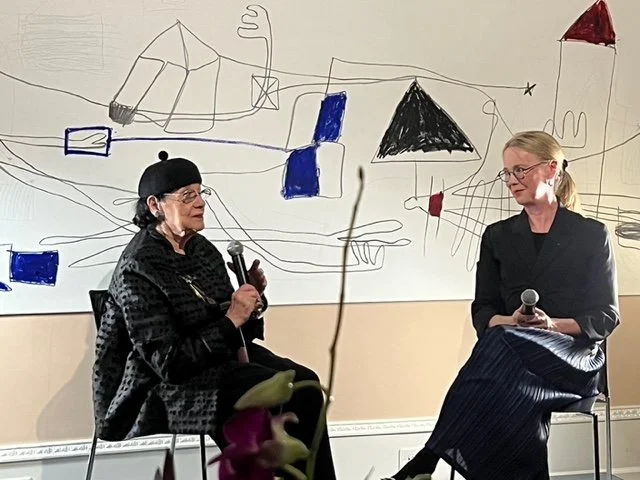





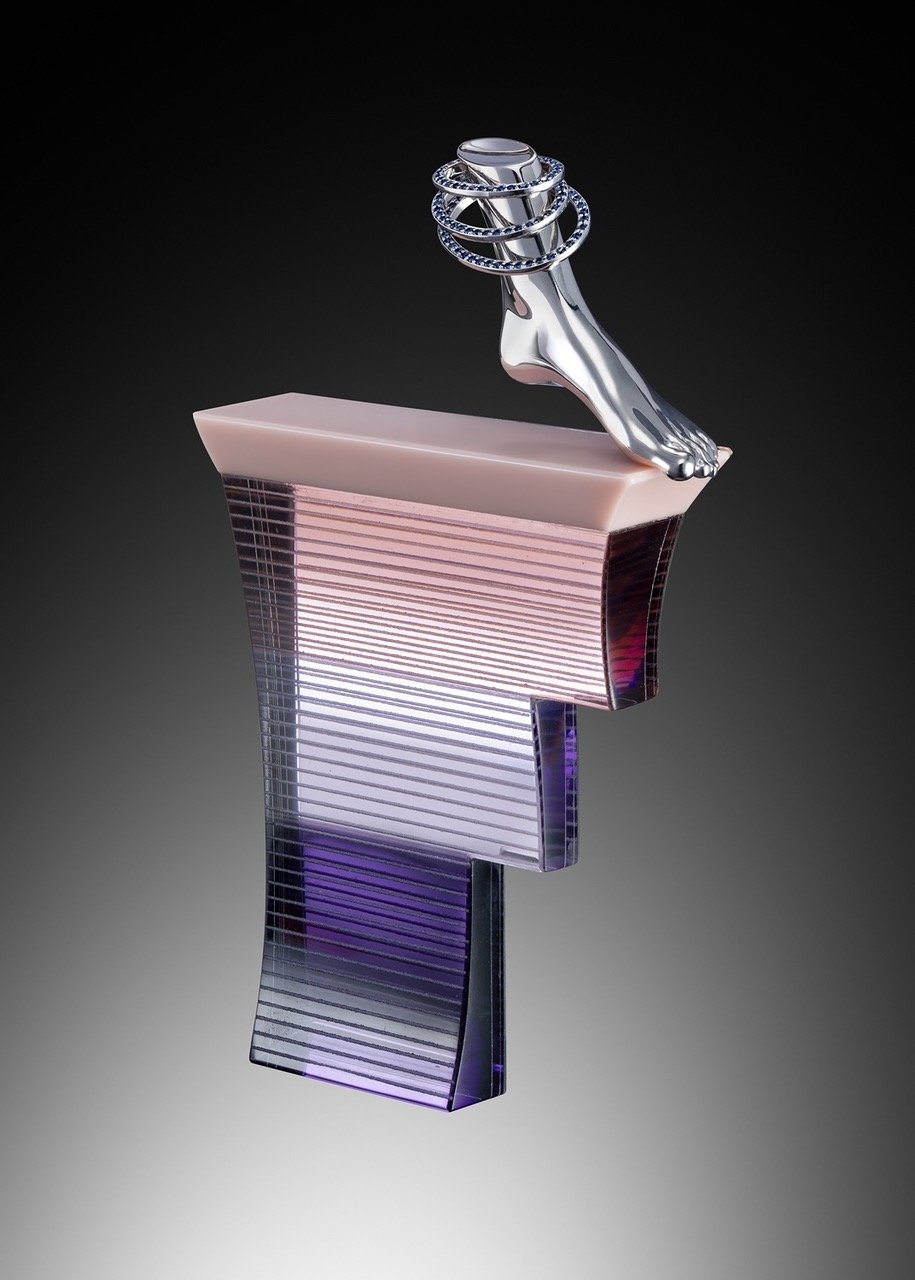









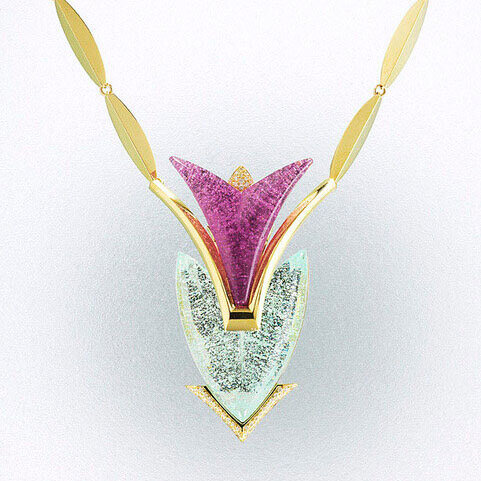



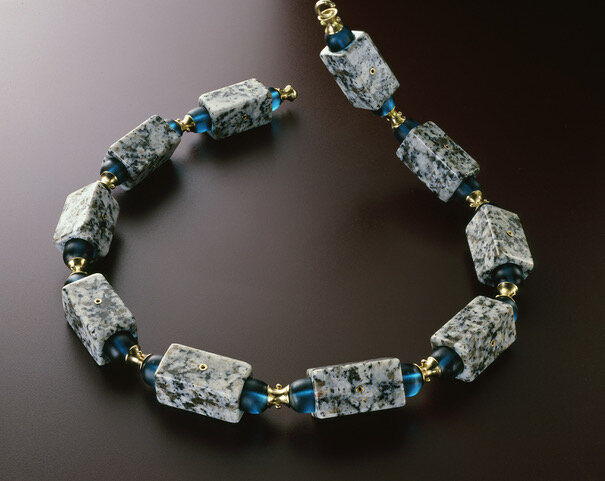



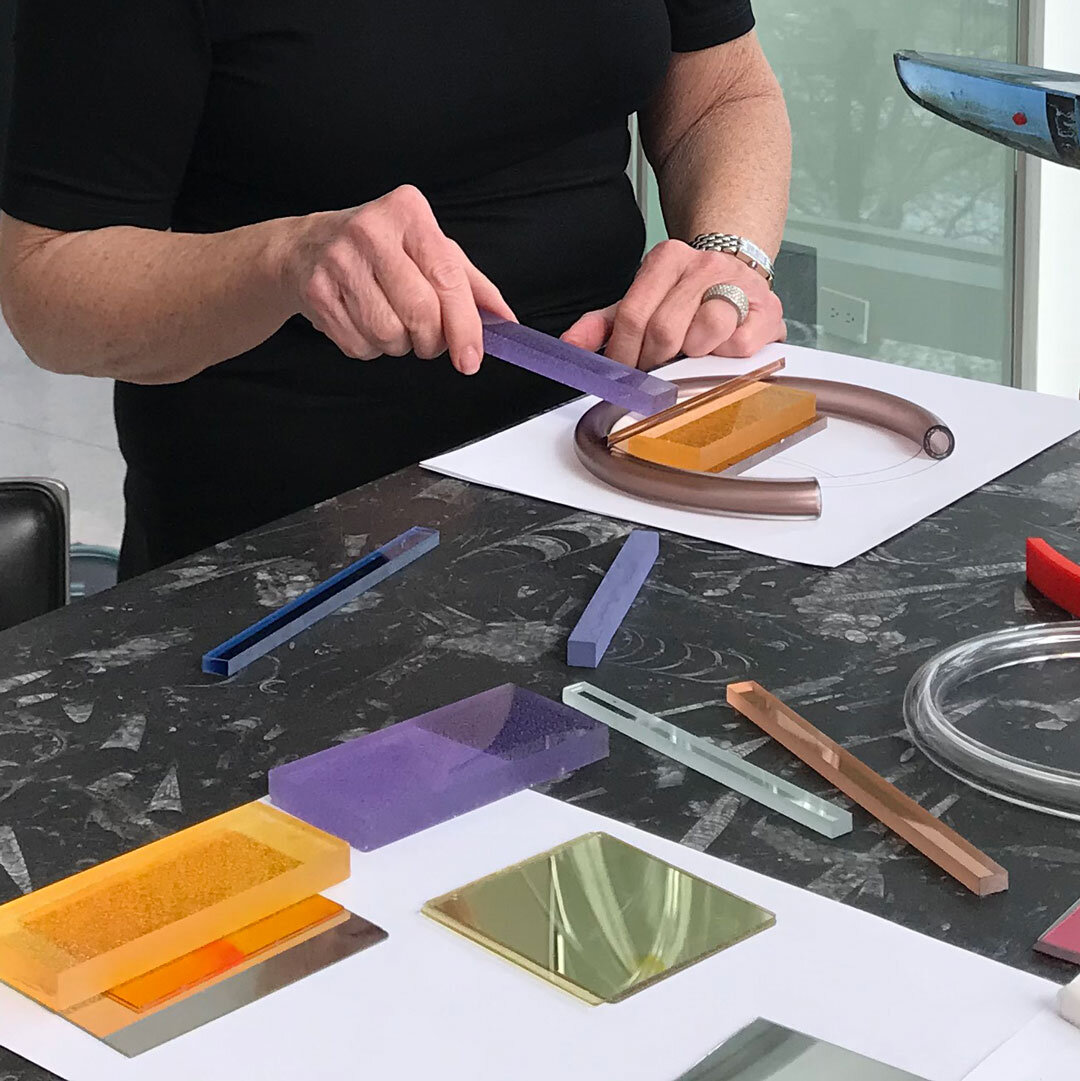
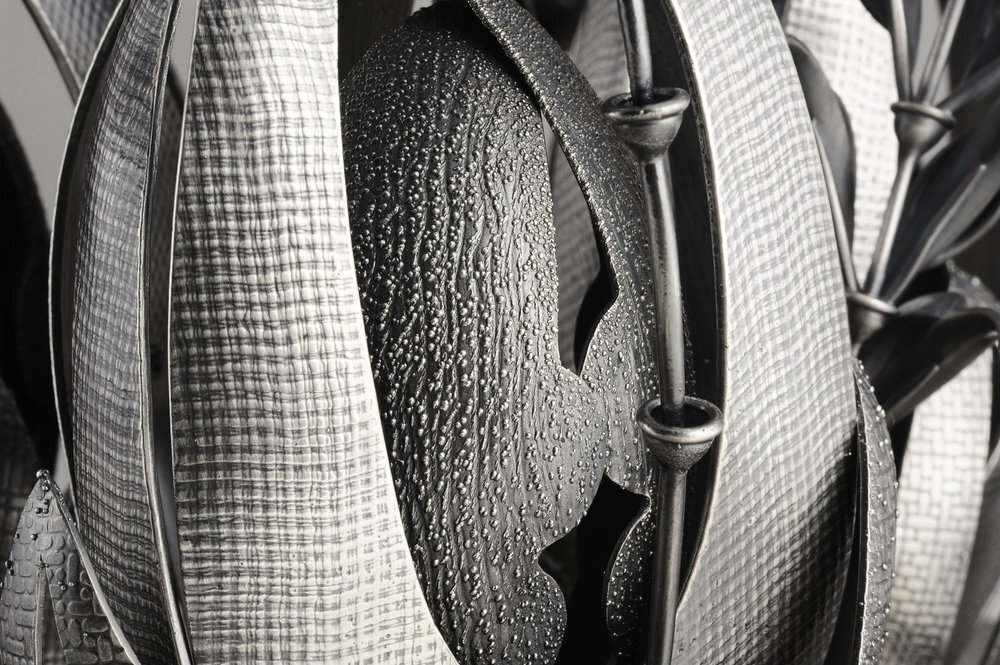














Q: Where does glass get its color from and why is red glass more expensive than any other color?
MACNEIL: It’s perhaps not very well known that colored glass is achieved by using oxidized metals to create the color within the glass. Historically many different elements were experimented with, but over time only the ones created with metals maintained their color intensity in all situations including direct sunlight. A prime example where the capacity to hold color is critical are the stained glass windows in churches, mosques, synagogues and cathedrals. They were positioned to get the most light possible throughout the day and the richness of the color was vital to their aesthetic.